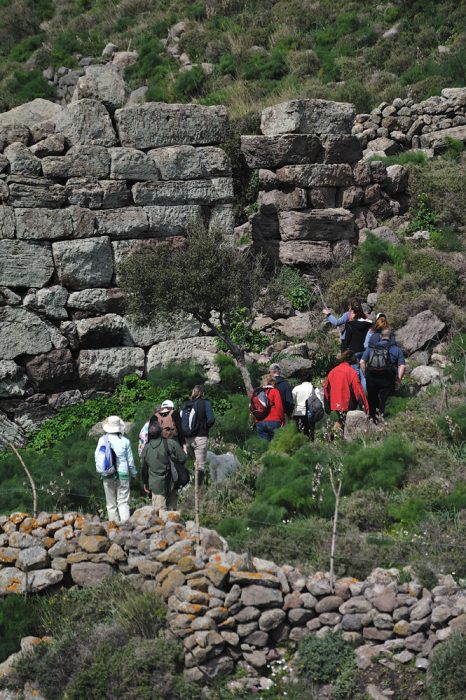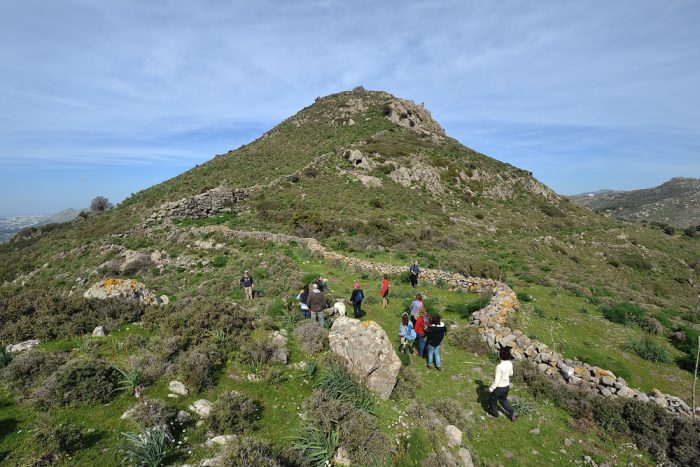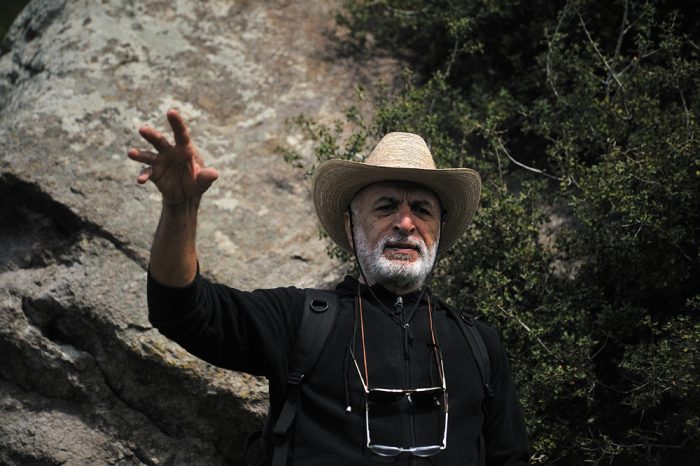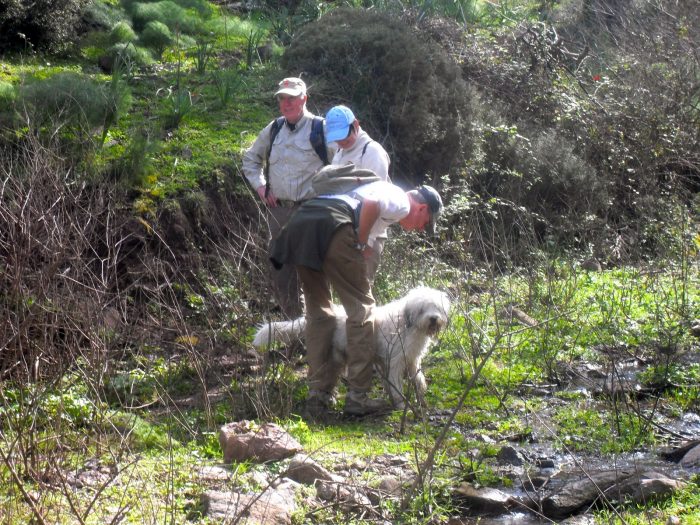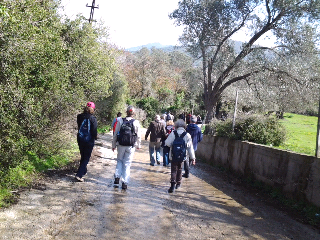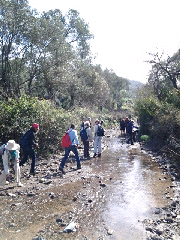I don’t usually do group walks as I prefer to wander around at my own pace, but when H3A announced that they were walking to the ancient Lelegian town of Termera, accompanied by two archaeologists who had been involved in a recent rescue excavation on the site, I was keen to join in. It’s always a joy to visit a site with an up-to-date source of information, rather than second-hand knowledge trawled from the internet. It would also be a novelty to walk cross-country to a Lelegian or Carian site without getting lost en-route.
The walk, initially planned for the end of January, was postponed twice because of heavy rain so it was the end of February by the time we all convened in the village of Akçaalan above Turgutreis to start the ascent. The head count was an impressive 50, which is an amazing number for a Sunday in February, unfortunately this figure did not include the two archaeologists, who couldn’t attend so we were without our experts.
After a brief pep-talk by team leader Ali Bey, with a reminder to not disturb any relics, we were off at a brisk pace. I’d arrived with a friend I’ve known for 30 plus years, and we happily strode forth, chatting all the way. With several other old friends and a sprinkling of new ones in the group, I realised that walking en masse is actually a very enjoyable activity. Especially in beautiful spring sunshine, surrounded by blossom and wild flowers. I was without my walking boots as I’d left them in the village so was attempting the walk in wellies, but had good reason to appreciate my forgetfulness when the path turned into a stream.
After about 40 minutes, our merry group came to a halt as our path petered out. We’d obviously missed a turning. I’m so glad that it’s not only me that gets lost on the way to these sites. An adventurous group of four, plus Jake the dog, set off cross-country uphill, while the rest of us turned around, retraced our steps, stopped for a group photo, picked some wild thyme, took pictures of the anemones, discussed the current political state of Turkey, found the correct path and eventually met the intrepid foursome plus dog on their way down.
The dog lead was handed over and Jake made his second climb of the day. If any animal deserves an honorary doctorate in archaeological studies, this dog does.
As we stalwart walkers made our way up the almost imperceptible rough path to the ancient walls of Termera, it was easy to appreciate the strategic importance of this site. Surrounded by fertile arable land and overlooking the present day Greek Islands, Termera was for a time, the richest settlement in the area, paying 2.5 talents to the Delian League in 447BC. Like the other 7 Lelegian towns around ancient Halikarnasus, Termera consists of an inner fort on a defendable peak, surrounded by thick stone walls and naturally treacherous descents. Following the line of the walls we came to a stop at a rock tomb fronted by a recent excavation trench.
After 10 years of land surveys, Dr Adnan Diler from Muğla University became concerned at the extent of the illegal treasure hunting in the area and with the support of Turgutreis Town Council and the archaeology team at Bodrum Castle, he obtained permission to start digging to preserve what remains of this settlement. His first season in 2012 has already produced evidence of occupation from 7th Century BCE. Historical sources tell us that Termera was ruled by Tymnes, his son Histiaios and grandson Tymnes in the 6th and 5th centuries BCE and we have physical evidence that this dynasty produced coinage in the shape of a silver coin with a kneeling figure of Herakles and the word TYMNO on one side and a lion’s head and TEPMEPIKON on the other. Charles Thomas Newton relates in his diaries how he bought the coin from a merchant in Kos in the 1850s. It is now in the British Museum. In the report of his discoveries in Halikarnasus, Newton mistakes Aspat Hill on the coast as the site of Termera. Later excavations identify the present site on Asarlık Hill.
While researching the site, one phrase turns up again and again; “Termeran Evil” or “Termeran Mischief”. A term I hadn’t come across before but refers to an action where an evil doer is given a taste of their own medicine. The myth being that Termenos, (who could be Tymnes 1st ) the founder of Termera, a “Lelegian of beastly nature” and a notorious pirate was fond of getting rid of his enemies by cracking their skulls with a lethal head-butt. Herakles killed Termenos by first drugging him and then crushing his skull. George Bean puts forward the theory that the phrase reflects the suffering of the people of Termera when Mausolos forced the population to leave their homes and move to his new capital Halikarnasus. A return being permanently blocked when he turned their city into a prison. Evidence from past excavations seems to prove that the city population was much reduced in the 4th century BCE.

